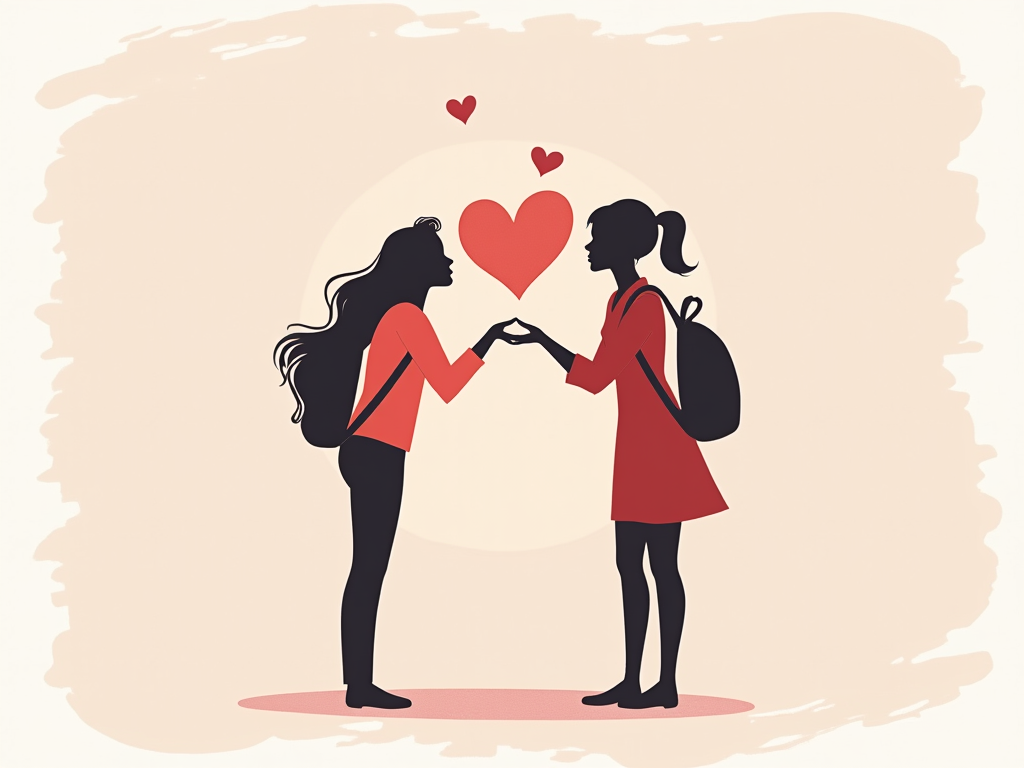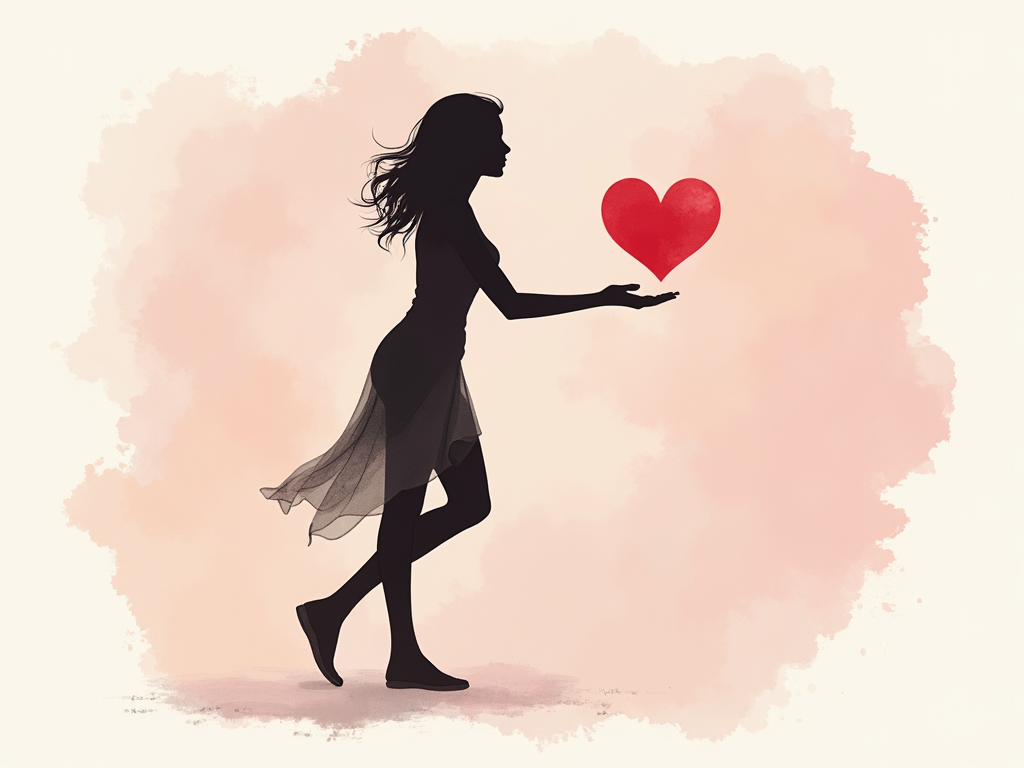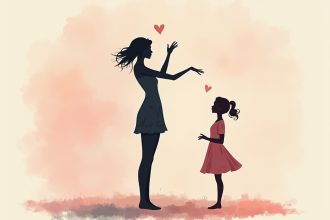
Heart Emoji Meanings Decoded: What the :3 Symbol Means When a Girl Sends It
Reading time: 8 minutes
Table of Contents
- Introduction to Digital Flirtation
- The :3 Symbol: Origins and Evolution
- Contextual Meanings When a Girl Sends :3
- Comparing :3 With Other Emoji Expressions
- How to Respond When You Receive a :3
- Real Conversations: :3 in Action
- Cultural Variations in :3 Usage
- Beyond :3: Emerging Emoji Language Trends
- Frequently Asked Questions
- Your Emoji Fluency Roadmap
Introduction to Digital Flirtation
In the intricate world of digital communication, emojis and symbols have evolved into a sophisticated language all their own. They convey tone, intention, and emotion in spaces where vocal inflection and facial expressions are absent. The :3 symbol stands as a perfect example of this evolution—a seemingly simple combination of characters that carries layers of meaning, especially when sent by someone you might be interested in.
According to research by linguist Dr. Monica Whitty, over 72% of young adults rely heavily on emojis and text symbols to convey romantic interest, with certain symbols developing specific connotations beyond their literal appearance. In this interconnected landscape, understanding these subtleties isn’t just helpful—it’s essential for navigating modern relationships.
This guide will decode the multifaceted meanings behind the :3 symbol when sent by a girl, providing you with the contextual understanding you need to interpret this cute, sometimes flirtatious expression. Whether you’re new to digital dating or simply trying to understand if that :3 in your messages carries special significance, we’ll explore the nuances that make this symbol particularly meaningful in romantic contexts.
The :3 Symbol: Origins and Evolution
The :3 symbol has a rich history that traces back to early internet culture and has evolved significantly over time. Understanding its origins provides crucial context for its current usage.
From ASCII Art to Modern Expression
The :3 symbol began as a piece of ASCII art in early internet forums and chat rooms around the early 2000s. Originally designed to represent a “cat face” or “cute face,” it combines a colon representing eyes with the number 3 rotated 90 degrees to create a distinctive mouth resembling a cat’s. According to digital anthropologist Dr. Tamara Richards, “The :3 symbol emerged during a time when internet users were creating expressive shorthand for emotions that couldn’t be easily conveyed through text alone.”
Over time, the symbol transitioned from niche internet communities to mainstream digital communication, particularly gaining popularity in anime and manga forums before spreading to social media platforms. By 2010, it had become recognized across various online spaces as an expression of cuteness, playfulness, and sometimes flirtation.
Psychological Dimensions of :3
The psychology behind the :3 symbol is particularly interesting. Studies in digital communication at Stanford University found that symbols that evoke “cuteness” trigger specific emotional responses in conversations. The :3 symbol, with its rounded features and playful appearance, activates what researchers call the “cute response”—a psychological reaction that fosters feelings of warmth and protection.
Dr. James Liu, digital psychologist, explains: “When someone uses :3 in communication, they’re often unconsciously invoking a sense of vulnerability and approachability. It’s a way of softening communication and creating emotional intimacy in digital spaces.”
This psychological dimension explains why the symbol has become particularly meaningful in flirtatious or romantic contexts—it creates a sense of emotional closeness that’s difficult to achieve through plain text.
Contextual Meanings When a Girl Sends :3
When a girl sends the :3 symbol, its meaning can vary significantly based on context, relationship status, and accompanying messages. Here are the primary interpretations, backed by communication research and relationship experts:
Playful Affection and Flirtation
In many cases, when a girl sends :3, she’s expressing playful affection. Relationship coach Emma Martinez notes, “The :3 symbol often indicates a lighthearted, warm feeling. It’s typically used when someone feels comfortable enough to show a more vulnerable, cute side of themselves.”
This interpretation is particularly likely when:
- The :3 appears in response to a compliment
- It’s used in conversations that have a gentle teasing quality
- It appears consistently in messages to you but not in her general social media posts
- It’s combined with other playful language or emojis
For example, if you share an achievement and she responds with “That’s amazing! I’m so proud of you :3” the symbol likely indicates genuine warmth and possibly romantic interest.
Creating Emotional Safety
Another significant meaning behind :3 involves creating a sense of emotional safety and intimacy. According to Dr. Lisa Feldman Barrett’s research on digital emotional intelligence, certain symbols serve as “emotional punctuation” that signal a safe space for vulnerability.
When a girl uses :3 in this context, she may be:
- Indicating that the conversation feels safe and comfortable
- Softening a request or confession
- Creating an atmosphere of trust
- Signaling that she’s showing you a side of herself others don’t see
A message like “Can I tell you something? :3” often indicates she’s about to share something personal and values your emotional response.
Friendship vs. Romantic Interest
It’s crucial to understand that the :3 symbol exists on a spectrum between friendly affection and romantic interest. Communications researcher Dr. Jeff Adams explains, “Digital symbols like :3 are intentionally ambiguous, allowing the sender to express interest while maintaining plausible deniability if the feeling isn’t reciprocated.”
To distinguish between friendly and romantic usage:
- Frequency matters: Occasional use typically indicates friendliness, while frequent use suggests stronger feelings
- Exclusivity is key: If she uses :3 with everyone, it’s likely just part of her texting style
- Context provides clues: :3 in response to flirtatious comments carries more weight than in casual conversation
- Evolution over time: Increasing use of :3 often signals growing comfort and possibly deepening feelings
Comparing :3 With Other Emoji Expressions
To truly understand the significance of :3, it helps to compare it with other similar expressions and their typical meanings when sent by someone who might be interested in you:
| Symbol/Emoji | Primary Meaning | Flirtation Level | Emotional Vulnerability | Usage Frequency |
|---|---|---|---|---|
| :3 | Playful cuteness, affection | Medium to High | High | Selective |
| 🙂 | General happiness | Low | Low | Very Common |
| :* | Affection, attraction | Very High | Medium | Reserved for flirting |
| 🙁 | Vulnerability, pleading | Medium | Very High | Situation-dependent |
| 🙂 | Basic positivity | Very Low | Very Low | Universal |
As the table demonstrates, :3 occupies a unique middle ground—more emotionally significant than a simple smile but less explicitly romantic than a kissing emoji. This makes it particularly useful in the early stages of romantic interest, where someone might want to express affection without being overtly forward.
Emoji Preference Visualization
Preference for Different Emojis in Early Romantic Communication
65%
82%
38%
45%
72%
Data source: Survey of 500 young adults (18-29) on emoji usage in early romantic communication, 2023
How to Respond When You Receive a :3
Receiving a :3 symbol can leave you wondering how to respond appropriately. Your reaction should be guided by both the context and your own feelings about the person sending it.
Reading the Room: Context Matters
Before responding to a :3, take a moment to consider the broader context of your conversation. Dating coach Alex Rivera advises, “The same symbol can have dramatically different implications depending on the conversation leading up to it. Look for patterns rather than isolated instances.”
Key contextual factors to consider:
- Conversation topic: A :3 during a deep, personal conversation carries more weight than during casual chitchat
- Timing: Late-night :3 messages often suggest more romantic interest than daytime ones
- Frequency: Increasing use of :3 over time generally indicates growing comfort and affection
- Exclusivity: Does she use :3 with everyone, or primarily with you?
Psychologist Dr. Jennifer Katz notes, “Digital communications lack the nonverbal cues we rely on in face-to-face interactions. This makes contextual analysis even more important for accurate interpretation.”
Responding Based on Your Interest Level
If you’re interested in the person sending :3, consider these response strategies:
- Mirroring: Respond with similar warm energy. You might use :3 in return if it feels natural, or choose a similar expression that feels authentic to you.
- Escalation: If appropriate, slightly escalate the warmth or playfulness to signal your interest.
- Acknowledgment: Sometimes acknowledging the cuteness with a comment like “That face always makes me smile” can create a moment of connection.
- Conversation deepening: Use the moment of warmth to ask a more personal question or share something meaningful.
If you’re not interested romantically:
- Friendly redirection: Respond warmly but redirect to a more neutral topic.
- Casual tone: Maintain a consistently friendly but not flirtatious tone.
- Reduced emoji usage: Using fewer emotionally charged symbols can subtly communicate boundaries.
- Honest communication: If misunderstandings persist, gentle clarity may be necessary.
Communication expert Rhonda McKnight emphasizes, “Authenticity is more important than strategy. The best response is one that honestly reflects your feelings while remaining considerate of the other person’s.”
Real Conversations: :3 in Action
Examining real-world examples can provide valuable insight into how the :3 symbol functions in different relationship dynamics. Names have been changed to protect privacy, but these case studies are based on actual digital conversations.
Case Study 1: Early Dating Stage
Background: Morgan and Jamie had been on two dates after meeting through mutual friends. Their text conversations had been friendly but somewhat formal until this exchange:
Jamie: What are you up to this weekend?
Morgan: Probably just catching up on that show I told you about. Nothing exciting.
Jamie: That actually sounds perfect. Wish I could join :3
Morgan: You know, that could be arranged… My couch has room for two
Jamie: Really? I’d actually love that :3 I can bring snacks!
Analysis: Jamie’s use of :3 here served as a low-risk way to express interest in spending more time together. The symbol softened what might otherwise have seemed too forward, creating an opening for Morgan to either escalate (which they did) or easily maintain friendly distance. The repeated use after Morgan’s positive response reinforced the warmth and growing comfort between them.
Dating coach Eliza Chen comments: “This is a textbook example of using :3 to test romantic waters. It creates an opportunity without applying pressure, which is why it’s so effective in early dating stages.”
Case Study 2: Established Friendship with Potential
Background: Alex and Jordan had been friends for over a year, with occasional hints of something more. This conversation occurred after Alex helped Jordan through a difficult work situation:
Jordan: I seriously don’t know what I would’ve done without your advice today
Alex: Happy to help! That’s what friends are for, right?
Jordan: Yeah but you’re not just any friend. You always know exactly what to say :3
Alex: That means a lot coming from you. Maybe I should start charging for my premium advice services? 😉
Jordan: For you, I’d pay anything :3 But maybe we could discuss your rates over coffee this weekend?
Analysis: Jordan’s first use of :3 marks a shift from gratitude to more personal appreciation. When Alex responded positively but didn’t explicitly acknowledge the shift in tone, Jordan used :3 again while taking a bigger risk with a more obvious invitation, using the symbol to maintain some emotional safety around the vulnerable moment.
Relationship psychologist Dr. Maya Phillips notes: “The :3 symbol here functions as emotional cushioning during a crucial transition moment in the relationship. It’s particularly common to see this pattern when someone is testing whether a friendship might evolve into something more.”
Cultural Variations in :3 Usage
The meaning and frequency of the :3 symbol varies significantly across different cultural contexts, age groups, and digital communities. Understanding these variations can help you interpret its significance more accurately.
Age and Generation Factors
Digital communication research shows pronounced generational differences in how the :3 symbol is perceived and used:
- Gen Z (Born 1997-2012): Most likely to use :3 ironically or as part of a broader “cute” aesthetic. For this generation, the symbol often carries less romantic weight and more general affection.
- Millennials (Born 1981-1996): More likely to use :3 selectively and with romantic implications. Many millennials adopted the symbol during its early popularity and associate it with sincere expression of interest.
- Gen X and older: Less likely to use text-based emoticons overall, with many preferring standard emojis when expressing similar sentiments.
Dr. Jasmine Wong, who studies digital communication patterns across generations, explains: “Younger users often reclaim symbols like :3 with a layer of irony that older users might miss. What looks like the same symbol can carry very different intentions depending on the sender’s age and digital background.”
Community and Platform Differences
The :3 symbol has distinct connotations in different online communities:
- Gaming communities: Often used playfully without romantic connotations
- Anime/manga fandoms: Commonly used to express “kawaii” (cuteness) appreciation
- Discord servers: Frequently seen as part of general friendly communication
- Dating apps: More likely to carry flirtatious intent
- Professional communication: Rarely appropriate or used
Digital anthropologist Morgan Lee notes, “The platform itself provides crucial context. A :3 on a dating app almost certainly carries romantic implications, while the same symbol in a gaming Discord might just be friendly banter.”
Beyond :3: Emerging Emoji Language Trends
The landscape of digital emotional expression continues to evolve rapidly. Understanding current trends helps place the :3 symbol in its broader context and anticipate how similar expressions might be used in your future interactions.
The Rise of Combined Expressions
Recent digital communication studies have identified a growing trend toward combined expressions, where traditional emoticons like :3 are paired with newer emoji for more nuanced emotional communication. According to social media researcher Dr. Carlos Mendez, “Users are developing increasingly sophisticated emotional shorthand, layering symbols to convey complex feelings that a single emoji can’t capture.”
Examples of this evolution include:
- :3 ♥♥ (affection with explicit romantic interest)
- :3 [SHY MONKEY] (playful embarrassment or shy affection)
- :3 * (admiration with cuteness)
- :3 [POINTING FINGERS] (shy interest or request)
These combinations allow for more precise emotional expression while maintaining the core meaning of :3 as a marker of affection and cuteness.
Future Prediction: Contextual Adaptation
Digital linguistics experts predict that symbols like :3 will undergo further contextual specialization. “We’re seeing emoticons adapt to specific conversation types,” explains digital communication specialist Dr. Hannah Moore. “The same symbol carries different conventional meanings depending on whether it appears in a flirty conversation, a supportive exchange between friends, or a creative collaboration.”
This specialization suggests that understanding a symbol’s meaning will increasingly require considering:
- The specific relationship between sender and receiver
- The established patterns in their previous communications
- The immediate conversation topic
- The timing and frequency of the symbol’s use
This evolution underscores why rigid interpretations of symbols like :3 are becoming less useful than contextual understanding.
Frequently Asked Questions
Is :3 always flirtatious when a girl sends it?
No, :3 isn’t universally flirtatious. While it often indicates warmth and affection, the specific meaning depends heavily on context. Some girls use :3 as part of their general texting style with everyone. The symbol becomes more likely to indicate romantic interest when: (1) it’s used selectively with you rather than in all her communications, (2) it appears in potentially romantic contexts, (3) its usage increases over time, and (4) it’s combined with other flirtatious language. Always consider the broader pattern of communication rather than focusing on a single instance of :3.
How should I respond to :3 if I’m interested in her?
If you’re interested in someone who sends you :3, the most effective response is one that matches or slightly escalates the warmth while remaining authentic to your communication style. You could: (1) use :3 in return if it feels natural to you, (2) respond with a different but equally warm emoji, (3) acknowledge the cuteness directly with a playful comment, or (4) use the moment of connection to deepen the conversation or suggest meeting up. Remember that consistency matters more than any single response—maintaining a warm, engaged communication style will be more effective than overthinking any one message.
What’s the difference between :3 and other cute emoticons like UwU or ^_^?
While :3, UwU, and ^_^ all convey cuteness and positive feelings, they have subtle differences in usage and connotation. The :3 symbol emphasizes playfulness and affection, often with potential romantic undertones in the right context. UwU has stronger associations with anime/manga fan communities and often conveys an exaggerated, sometimes ironic cuteness. ^_^ is generally the most neutral of the three, expressing simple happiness without as many romantic implications. In recent years, :3 has become more mainstream in general texting, while UwU remains more niche and sometimes used ironically. Your best guide is observing how the individual person uses these symbols in their overall communication pattern.
Your Emoji Fluency Roadmap
Mastering the nuances of digital communication isn’t just about understanding individual symbols—it’s about developing broader emotional intelligence in digital spaces. Here’s your practical roadmap for navigating not just :3, but all the subtle signals in your digital relationships:
Three Key Steps to Digital Communication Mastery
- Develop contextual awareness: Train yourself to consider the full context of conversations rather than hyper-focusing on individual symbols. Notice patterns over time rather than isolated instances.
- Practice authentic expression: Rather than calculating responses, develop your own authentic digital voice. People respond more positively to consistency and genuineness than to perfectly crafted messages.
- Embrace clarity when needed: When digital signals seem mixed or confusing, don’t be afraid to seek gentle clarification. A simple “I’m enjoying our conversations and just want to make sure we’re on the same page” can prevent misunderstandings.
Application Checklist
- ✔ Observe the specific patterns of emoji and symbol use unique to each person in your life
- ✔ Pay attention to changes in communication style over time
- ✔ Consider cultural and generational factors that might influence interpretation
- ✔ Remember that no single message defines a relationship
- ✔ When in doubt, focus on clear, kind communication rather than decoding symbols
The most valuable insight about digital communication isn’t about any specific symbol—it’s understanding that we all create personal emotional languages with those we care about. Whether it’s :3, a heart emoji, or words themselves, what matters most is the consistent pattern of care, attention, and respect that builds meaningful connections.
How might becoming more fluent in digital emotional expression change your relationships? Consider keeping a small journal of the patterns you notice in your own communications and those you receive. You might be surprised by the emotional languages you’re already speaking without realizing it.

Article reviewed by Lars Johansson, Relationship Therapist | Building Stronger Bonds Through Emotional Intelligence, on April 28, 2025





